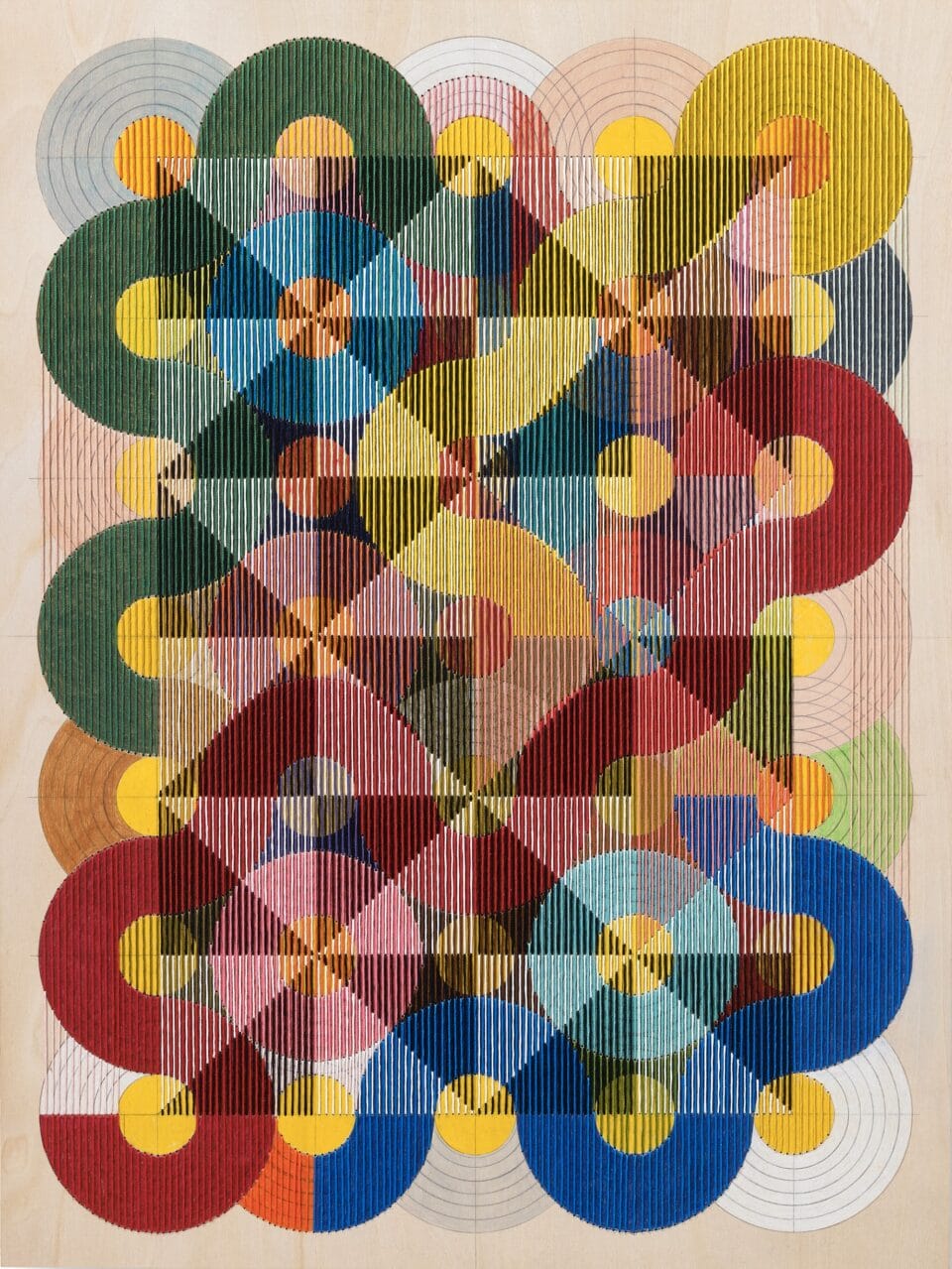Tia Keobounpheng
When seeing this artwork for the first time, I wondered if the thick dark green line weaving its way through the top left corner formed a Celtic knot – linking up with itself again to form an unending loop. Symbolic, in part, of the unending love of God. But I soon discovered that this wasn’t the case. Like the other thick coloured paths it suddenly stops or morphs and joins with others. They are all seemingly random stretches, taking in varying parts of the circles that this artwork is made up of. And then I started noticing the triangles. Alternately light and dark. Sometimes apparently arranged like windmills around central circles, at other times forming squares of different sizes, either on their side or on their point. And when I looked at the artwork again later, the triangles nearly seemed to work like an optical illusion invoking a third dimension: looking like square pieces of origami paper that had been folded with some parts raised and others lowered. The more you look at this artwork, the more there is to see. And underlying all the colours and patterns are the meticulously and carefully drawn circles and lines, many not (yet?) coloured in or covered with threads. Is this unfinished? Or deliberately showing the artist’s working? Or simply constrained by the limits set by the board?
I am reminded of the ways in which generations of Christians have been trying to see and understand God. Each generation, looking with fresh eyes, sees something different, focusses on a new aspect, discovers a new pattern. In Galileo Galilei’s time this meant learning to see with the eyes of astronomers; that the sun, not the Earth is at the centre of our solar system. In the time of Charles Darwin, this meant learning to see with the eyes of biologists: that humans developed through evolution rather than being created directly. More recently we have learned to see not only through the eyes of scientists, but those of people who have been oppressed and marginalised. And, with time, the initial conflicts and arguments have given way to an understanding that these things need not threaten our faith; they simply give us a new way of seeing God. Turning squares of triangles into folded origami paper, as it were. So what challenges our faith today? Homosexuality? Neuroscience? Artificial Intelligence? How does our understanding of God need to adapt? What new patterns are emerging as we look at God and the world with 21st century eyes?
All we need to remember about this artwork, is that underlying it all, is a set of circles whose centres are connected by lines. All we need to remember about God, is that underlying it all, God is love, as seen in the life of Jesus. That is what gives everything else its shape: the beauty, the colours, the patterns which change each time we look. Like this artwork, our collective understanding of God is seemingly unfinished, still work in progress, defined and limited by our place in time and space, but always based on that core understanding of circles connected by lines, of God being unending love.
Biblical References
God is Love (1 John 4:8)
The Artist
Tia Keobounpheng is an interdisciplinary artist with Finnish and Sámi heritage based in Minnesota. You can find out more about her and see many of her works (including many other artworks from her THREADS series) on her website.

Leave a Reply